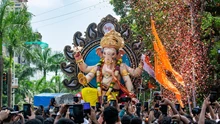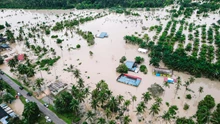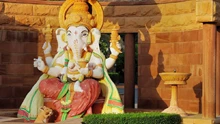
The Pradhan Mantri Adarsh Gram Yojna is transforming 36,428 tribal-dominated villages across the country into 'Adarsh Grams.' The Union government will provide them with all basic necessities. The government has set aside Rs 7,300 crore for this purpose.
"The Modi government has not only begun developing 36,428 tribal-dominated villages as Adarsh Grams, but it has also decided that the birth anniversary of Bhagwan Birsa Munda will be celebrated every November to create a feeling in the tribal society that the revered persons of their society are special to all, including the government," BJP national spokesperson Gaurav Bhatia said on Friday.
There are 705 ethnic groups in India that are officially recognized as Scheduled Tribes. Lakshadweep, Meghalaya, Mizoram, Odisha, West Bengal, Jharkhand, Bihar, Madhya Pradesh, Dadra & Nagar Haveli, Tamil Nadu, Kerala, Assam, Arunachal Pradesh, and Nagaland have the most. According to the 2011 census, Madhya Pradesh has the highest tribal population of any state.
"Prime Minister Narendra Modi has mentioned the 'Eklavya' Model School' as a means of providing better education to children from the SC and ST communities." In five years, the government plans to build 452 new schools and renovate 211 existing ones under this program, according to Bhatia.
The government increased the allocation for the education of children from the SC and ST communities in the Union budget from Rs 1,100 crore to Rs 6,000 crore.
About Pradhan Mantri Adarsh Gram Yojna
The Pradhan Mantri Adarsh Gram Yojana (PMAGY) is a rural development programme in India launched by the central government in the fiscal year 2009–10 for the development of villages with a higher proportion (over 50%) of people belonging to the scheduled castes through the convergence of central and state schemes and the allocation of financial funding on a per village basis.
The plan is regarded as ambitious because it seeks to bring a variety of development programmes to the villages.
Bharat Nirman, Pradhan Mantri Gram Sadak Yojana (PMGSY) for rural roads, water supply, housing, and electrification, as well as other large-scale schemes such as Sarva Shiksha Abhiyan, Mahatma Gandhi National Rural Employment Guarantee Act, Integrated Child Development Services, and sanitation, are examples of these programs. This program would apply to approximately 44,000 villages that had a scheduled castes population of more than 50% and thus qualified for PMAGY.










